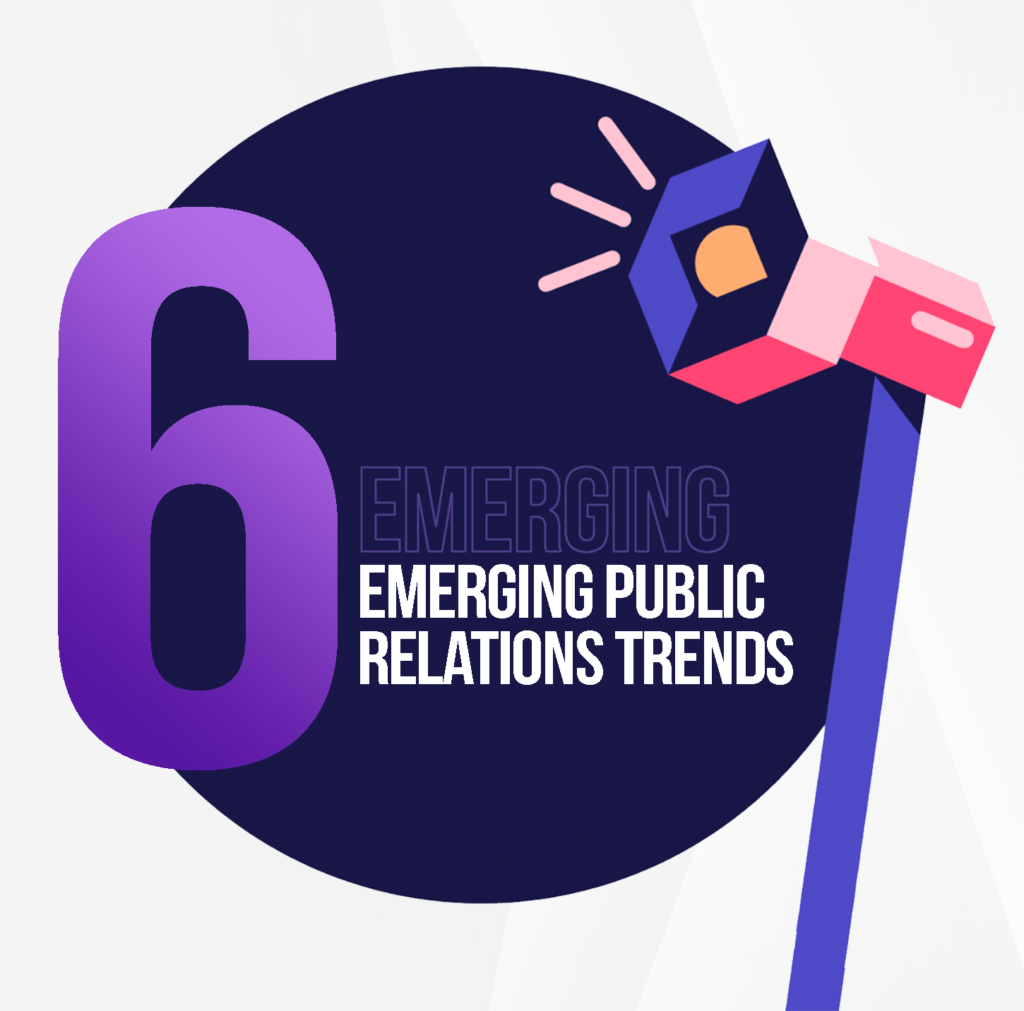
Shifting metrics, bigger budgets as marketing and public relations overlap, and the growing importance of digital channels and content will weigh heavily on pros’ and agencies’ successes.
Which public relations trends can help your growth and development? These aspects of the job can be tough to master, yet they can help you get a running start toward the industry’s future. Here’s what we have in store:
1. Promoting expertise at all levels
In the past, only top-tier executives were put forth as an organization’s industry experts. Now lower-level employees are offering their insights.
This has multiple benefits. First, it helps your brand to target a wider, more diverse audience and distribute more content. Second, when top executives leave your company, they don’t leave a knowledge vacuum.
Help those at all levels to grow and nurture their brand. Encourage them to write thoughtful content and create social media profiles that show off their expertise.
2. An overall rise in PR spending
According to a joint report from the Association of National Advertisers and the USC Center for Public Relations, spending on PR will change. More specifically, marketers plan to increase internal staffing and overall spending on public relations over the next five years.
This is due to the evolution of PR over the past decade and its increased importance for marketers.
Think of some primary PR components that make it so valuable to a business’s growth. Digital communications have never been more important for business, and PR is at its centre.
Another big component of business growth is social media. You can’t be in business today without a social media presence. PR provides the strategy and content to amplify your social media presence.
3. A growing reliance on speciality PR firms
Many boutique PR firms specialise in specific aspects of public relations, such as launch PR and reputation management. If you’re having a problem in one of these areas, you will want a skilled authority calling the shots.
Don’t be shy about calling in extra help on occasion. Using adept professionals during key moments of your company’s development could save you from a PR disaster.
4. A shift toward digital
When one survey asked about major PR trends for the next five years, digital storytelling, social monitoring and big data topped the list.
To align your PR and marketing with this changing world, use digital storytelling to engage your audience.
Help outsiders get to know the people within the company, and inform them about what sets you apart from your competitors. Share your passions and your struggles. This kind of narrative will endear you to prospects and keep them engaged in your story.
Become a master at social monitoring with apps like Hootsuite and Mention. Be the first to see negative conversations about your brand, and be ready to address problems before they get out of hand.
Use big data to adjust your content and strategy to reach more of your target audience. Big data can show you what topics and problems are trending in your industry, so you can be among the first to address them. Use it to deliver your insights on emerging topics before your competitors have a chance to react.
5. Providing alternatives to ‘dark social
Social media and its influence have become an integral part of PR, and savvy pros use tools such as BuzzSumo and Hootsuite to use online platforms.
Beyond them lurk communication methods such as text, email and chat apps, which are nearly impossible to monitor.
Organisations must create, own and manage their digital property. You can build a library of unique and valuable content by developing a proprietary platform. This will heighten your audience’s engagement, keep them coming back for more and give you visible results.
6. Quantitative versus qualitative measurement
People find comfort in seeing specific numbers of page views, “likes” and rates for measuring the success of their PR, but how do you gauge growth in brand trust or awareness? This is where PR pros must draw the line between quantitative and qualitative measurement.
Quantitative metrics might be easier, but they do not give an accurate or full-scale picture of public relations ROI.

